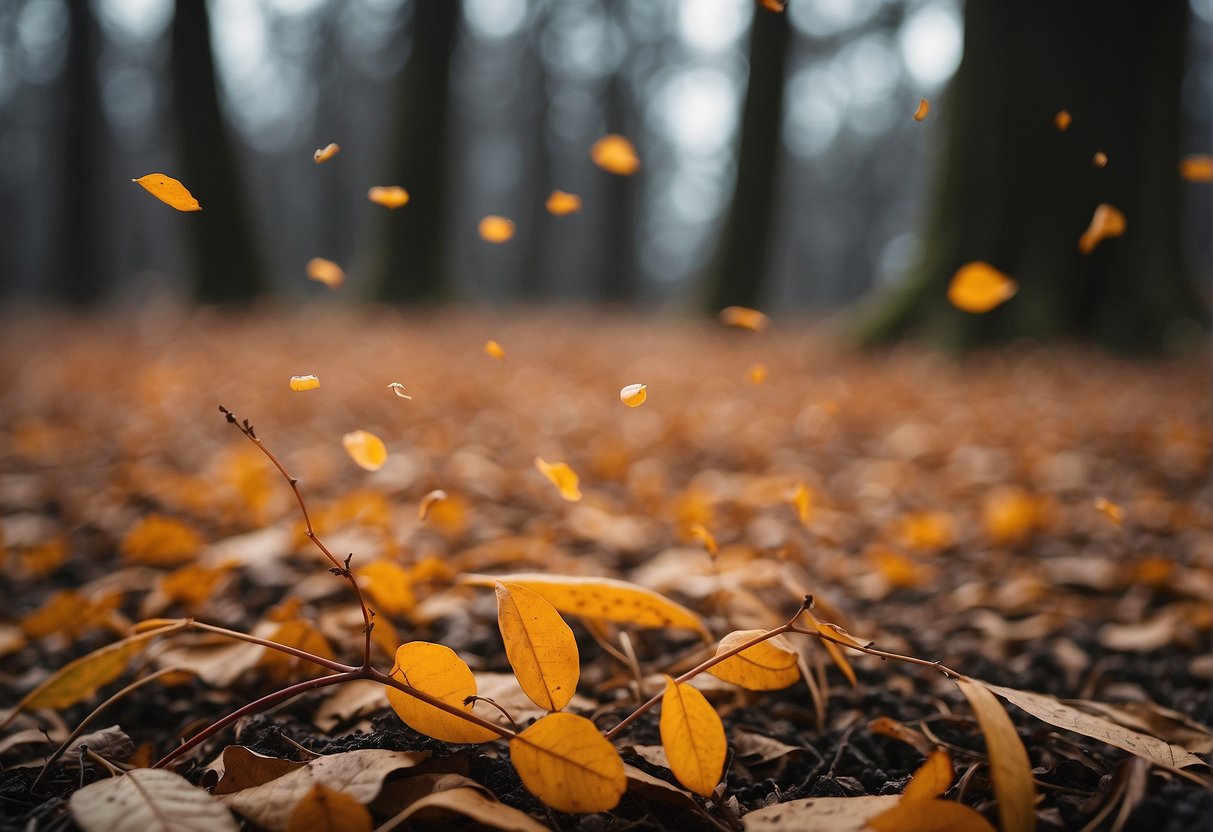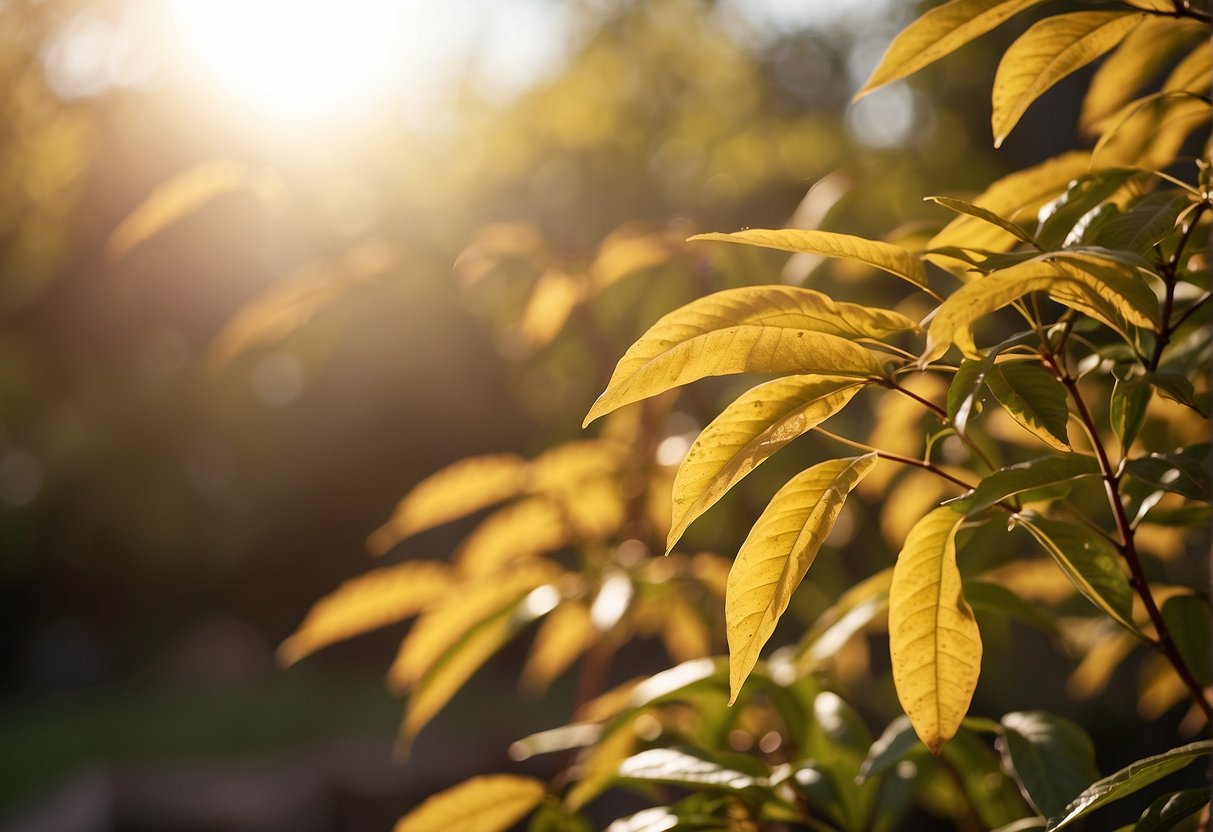If your firebush plant is unexpectedly losing all of its leaves, you may be puzzled about the cause. Witnessing a previously thriving plant rapidly shed its leaves can be distressing, yet there are several explanations for this occurrence. In this article, we will delve into the prevalent reasons behind the dropping of leaves from your firebush and discuss measures to avert such incidents in the future.

One of the most common reasons why firebush plants lose their leaves is simply because they’re entering their dormant phase. This is a natural process that occurs during the winter months, as the plant prepares itself for the colder weather. During this time, the plant will shed its foliage in order to conserve energy and protect itself from the elements. However, if your firebush is losing its leaves outside of the winter months, there may be other factors at play.
Key Takeaways
- Firebush plants naturally shed their leaves during the winter months.
- Overwatering and underwatering can both cause firebush leaf drop.
- Proper care and maintenance can help prevent firebush leaf drop.
Understanding Firebush Leaf Drop

If you have noticed that the leaves on your firebush (also known as Hamelia patens) are falling off, there are several possible reasons for this occurrence. Understanding the factors that contribute to firebush leaf drop can help you identify the cause and take appropriate action to remedy the situation.
Environmental Factors
Temperature, light, water, climate, and weather can all play a role in firebush leaf drop. During the summer months, high temperatures and drought can cause leaves to wilt and drop off. In the fall and winter, frost and cold temperatures can damage the leaves and cause them to fall off prematurely. Inadequate watering or overwatering can also lead to leaf drop.
Cultural Practices
Cultural practices such as fertilizing, pruning, rooting hormone, and transplanting can also affect firebush leaf drop. Overfertilizing can cause excessive growth and stress the plant, leading to leaf drop. Improper pruning can damage the roots and cause the plant to lose leaves. Using rooting hormone or transplanting the plant can also cause stress and lead to leaf drop.
Plant Health and Pests
Firebush leaf drop can also be caused by plant health issues and pests. Infection, mites, aphids, and stress can all cause leaves to wilt and fall off. Mold, root rot, and fungus can also damage the roots and cause leaf drop. Regularly checking for signs of infestation and disease can help prevent these issues from causing leaf drop.
Overall, proper care and attention to the needs of your firebush can help prevent leaf drop. Gardening tips such as proper watering, mulching, and providing adequate nutrients to the roots can help keep your firebush healthy and vibrant. By understanding the factors that contribute to firebush leaf drop, you can take appropriate action to ensure the health and longevity of your plant.
Optimizing Firebush Care

To ensure your firebush stays healthy and vibrant, it is important to optimize its care. This includes proper watering and drainage, seasonal maintenance, and pest and disease management.
Proper Watering and Drainage
Firebushes prefer well-drained soil and are drought-tolerant, so it is important not to overwater them. To optimize watering, make sure the soil is dry to the touch before watering. When watering, make sure to water deeply to encourage deep root growth. Additionally, make sure the soil has proper drainage to prevent wet conditions that can lead to root rot.
Seasonal Maintenance
To keep your firebush looking its best, it is important to perform seasonal maintenance. This includes adding mulch to the base of the plant to help retain moisture and regulate soil temperature. Additionally, adding compost or organic material to the soil can help improve soil quality. Fertilizing your firebush in the spring and summer can also help promote healthy growth.
Pest and Disease Management
Firebushes can be susceptible to pests and diseases, including scale and other insects. To prevent these issues, make sure to keep your firebush healthy and stress-free. This includes providing the right amount of water and nutrients, as well as ensuring it is not exposed to cold winter temperatures. If pests or diseases do occur, neem oil can be an effective treatment.
By optimizing your firebush care with proper watering and drainage, seasonal maintenance, and pest and disease management, you can ensure your firebush stays healthy and vibrant.
Frequently Asked Questions
What causes a firebush to shed its leaves?
There are several reasons why a firebush may shed its leaves. One of the most common reasons is seasonal changes, especially during the fall and winter months. Other factors that may cause leaf drop include environmental stress, disease, pests, and improper care.
Is it normal for a firebush to lose leaves during the winter months?
Yes, it is normal for a firebush to lose leaves during the winter months. This is because firebush plants are deciduous, which means they shed their leaves annually in response to changes in temperature and light. However, if the leaf loss is excessive or occurs outside of the normal seasonal cycle, it may be a sign of a problem.
Can environmental factors lead to leaf drop in firebush plants?
Yes, environmental factors such as drought, extreme temperatures, and exposure to harsh winds can cause a firebush to shed its leaves. In some cases, too much water or poor soil conditions can also lead to leaf drop.
How does seasonal change affect firebush foliage?
Seasonal changes, particularly the transition from fall to winter, can trigger the shedding of firebush leaves. During this time, the plant prepares for dormancy by redirecting energy away from its leaves and towards its roots. As a result, the leaves gradually turn yellow, then brown, and eventually fall off.
What steps should be taken when a firebush loses its leaves unexpectedly?
If your firebush loses its leaves unexpectedly, there are several steps you can take to address the problem. First, check for signs of pests or disease, such as leaf spots or discoloration. If you suspect a problem, consult a professional or your local garden center for advice. Additionally, make sure your firebush is getting enough water and nutrients, and consider adjusting its growing conditions if necessary.
Is leaf loss a sign of a disease in firebush plants?
Leaf loss can be a sign of disease in firebush plants, particularly if it occurs suddenly or is accompanied by other symptoms such as yellowing or wilting. Common diseases that can cause leaf drop include powdery mildew, rust, and leaf spot. If you suspect a disease, it is important to take action quickly to prevent further damage to your plant.














